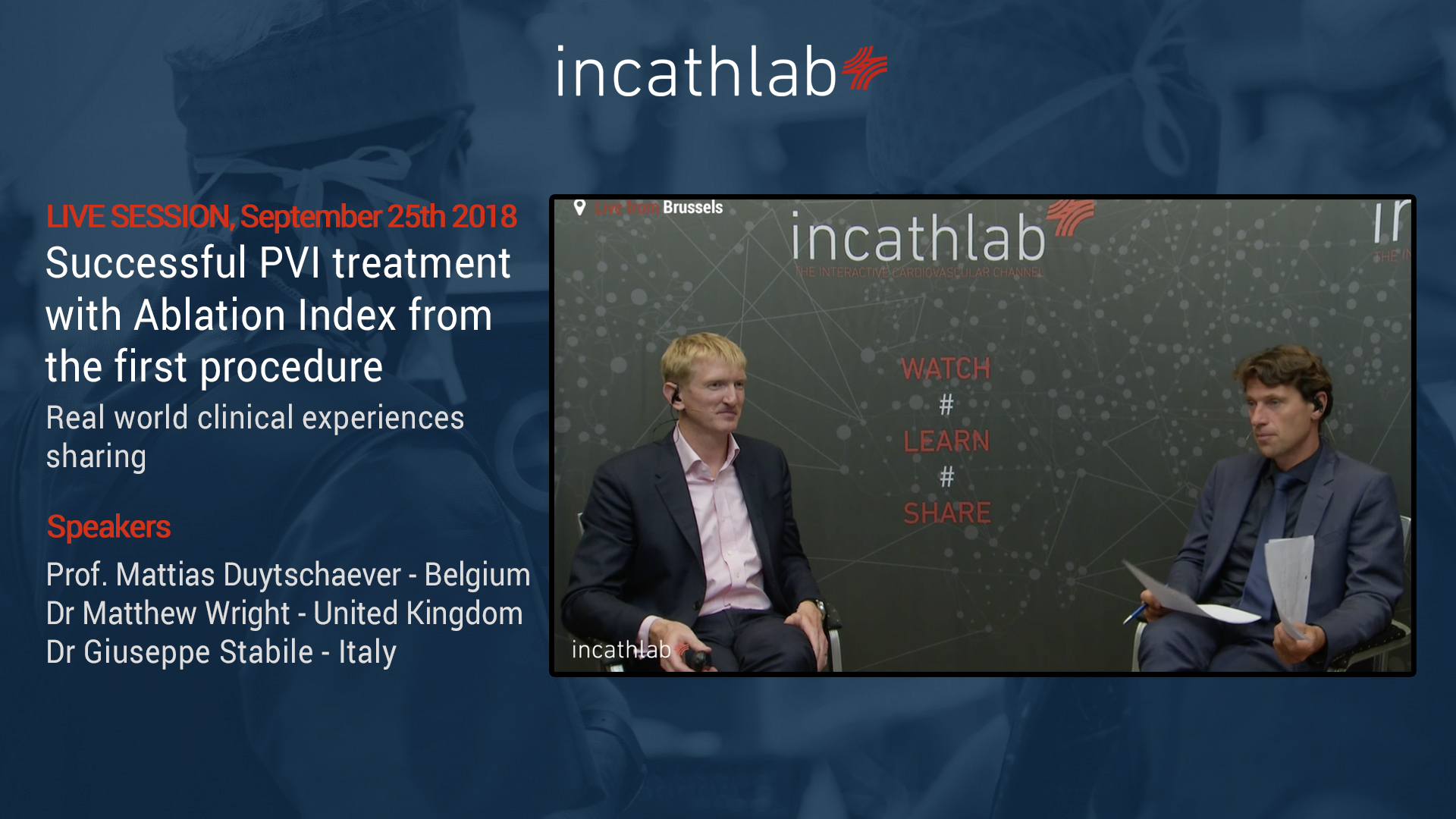
Become an Incathlab member and receive full access to its content!
Registration Login
HOW TO GET YOUR EBAC CERTIFICATE
(ONLY IF YOU'VE WATCHED THE WEBINAR IN LIVE)
1. Check your inbox: You'll receive an email to get your EBAC Certificate of Attendance
2. Fill in the survey and answer the Multiple Choice Questions
3. If you've answered 4 MCQs correctly at least, you'll receive an email with your EBAC Certificate of Attendance in the next days
CME PROVIDER: JIF Angio
Course Director: Dr Alexandre Avran

This programme is accredited by the European Board for Accreditation in Cardiology (EBAC) for 1 hour of external CME credit. Each participant should claim only those hours of credit that have actually been spent in the educational activity.
The EP field is undergoing an important transformation with regard to standardize the Afib procedure, in a safe, effective and efficient way. The purpose of this webinar is to support participants interested in advancing their RF AF ablation practice and in knowing new experiences in using Ablation Index for PVI. The webinar faculty will discuss their experiences, presenting their data and sharing tip&tricks to reproduce and standardize a successful ablation strategy in a simple way.
Program
|
17:30-17:40
|
Introduction & Presentation
Prof. Duytschaever |
|
17:40-17:55
|
Real World Experience from UK: Simplification and Standardization
Dr Wright
|
|
17:55-18:15
|
Real World Experience from Italy: Reproducibility
Dr Stabile |
|
18:15-18:30
|
Q&A session. Take home messages and Conclusion
Panel discussion |
Educational objectives
-
Discuss new real world clinical experiences using Ablation Index for PVI
-
Increase Standardization and Reproducibility, Optimizing the workflow and improving efficiency during RF ablation procedures
-
Improve knowledge of the use of Ablation Index during AF ablation (tips and optimized workflow)
Audience
- Cardiac electrophysiologists and allied health professionals performing and assisting during RF AF ablation procedures
- Healthcare professionals using alternative AF ablation techniques will also find this topic appealing
In compliance with EBAC guidelines, all speakers/chairpersons participating in this programme have disclosed or indicated potencial conflicts of interest which might cause a bias in the presentations. The Organizing Committee/Course Director is responsible for ensuring that all potencial conflicts of interest relevant to the event are declared to the audience prior to the CME activities.
Supported by an unrestricted grant from Biosense Webster
Last update : 2019-09-27


Bashilov S. I have no video!
Chingiz S. hI! What we should do when making RF lesion between LSPV and LAA, if patient has arris(acute) angle(ridge)?
Matt W. When stability is an issue there are a few things that can be tried.
If using a fixed sheath (eg SR0) then you can go into the ostium of the LSPV and reduce the AI, eg 350. If under general anaesthesia you could ask for a period of apnoea, you could use a steerable sheath for better stability
Matt Wright
Usama B. I did attend it and not sure how to claim my certificate
bolesu@tcd.ie
Rocio R. Please, check your inbox! Normally we have sent you an email if you've watched the webinar in live. If you have any problem, send an email to intouch@incathlab.com
Usama B. Thank you
UB
Matt W. Thanks.
In response to some of the questions.
Tamponade frequency is very low (
Matt W.
Chingiz S. where is video?
Rajin C. great talk
Matt W. Thankyou.
There were a lot of questions we didn't have time to include.
There was a question on the routine use of integrated CT.
I don't personally do this. I prefer the real-time map made with the multipolar mapping catheter, as not only does it give me anatomy but also voltage information.
There was another question about what to do if you don't isolate on the first pass. There are a number of possibilities- pace and ablate along the line; interrogate the AI numbers along the line, look for the contiguity of each lesion- looking for the weakest link. Pace from inside the vein and map the exit, use the multipolar mapping catheter to guide you. It's best to have a number of ways of mapping gaps as sometimes one way will be better than others.
Matt Wright